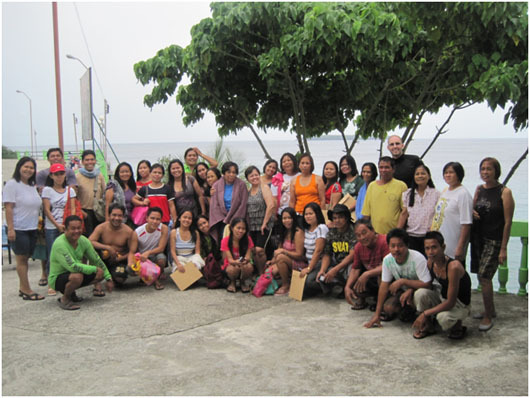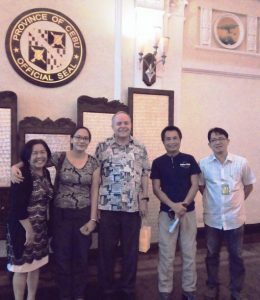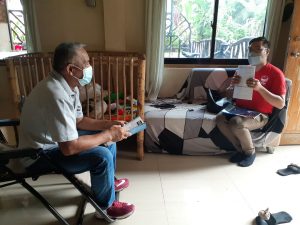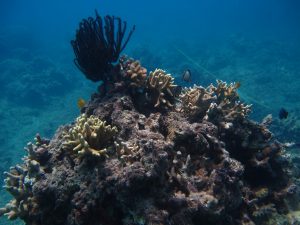Santander, Cebu – Grass roots projects and community-based approaches to conservation and development work are all the rage these days. Community-based tourism, community-based natural resource management, and community-based ecological monitoring are just a few such approaches being employed by an increasing number of businesses, researchers, agencies, and governments around the world. In the realm of public education, with the potential to address local concerns while bridging the gap between governments and the governed, taking a community-based approach to curriculum design and classroom instruction is sure to catch on, as well, if it hasn’t already.
Community-based education, with a splash of coastal environmental management, was the overarching theme of a recent Coastal Conservation and Education Foundation (CCEF) project conducted in the province of Cebu, Philippines. Funded by the Center for Collaborative Conservation of Colorado State University in the U.S.A., in partnership with the CCEF, Ph.D. student David Knight joined forces with teachers, government representatives, and coastal law enforcers in the municipality of Santander to optimize educator involvement in the governance of marine protected areas.
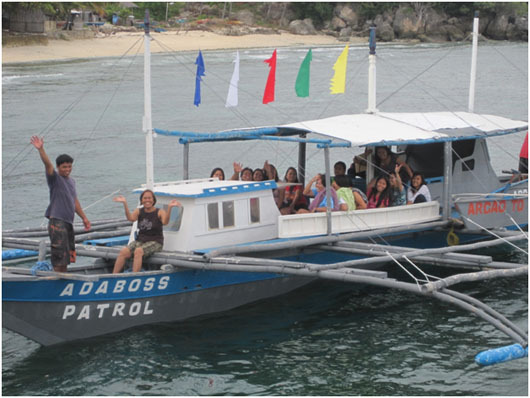
Santander’s bantay dagat lead educators on an experiential learning patrol through municipal waters near the marine sanctuary in Pasil barangay.
As a result of the project, over thirty elementary school teachers and principals participated in two lakbay aral experiential learning trips, learning about Santander’s integrated coastal resource management plan (ICRMP) and having close interactions with ten local coastal law enforcers (or bantay dagat as they are called in Cebuano). The two trips were full-day events, free for educators, and included such activities as swimming/snorkeling lessons, a patrol boat ride with the bantay dagat through Santander’s marine sanctuary, a visit to a mangrove-planting site, a glass-bottom boat excursion, and snorkeling in the marine sanctuary of a neighboring municipality. Lunch was provided on both trips, and presentations were conducted in which educators were exposed – many of them for the first time – to such topics as:
- national laws and municipal ordinances related to coastal/marine resource governance
- the tremendous quality of Santander’s marine ecosystems (for example, everyone was surprised to learn that international tourists visiting Santander’s reefs generate 25-40,000 USD per year from diving/snorkeling fees alone)
- how and why the bantay dagat do what they do, receiving little more than an honorarium of 50 USD per month to monitor municipal waters
- the pros/cons of marine sanctuaries regarding food security and livelihoods issues
After the experiential learning trips had occurred, a final meeting was held in which members of Santander’s government, coastal law enforcement team, and Central Elementary School discussed how such experiential learning opportunities for teachers might support coastal resource management efforts and help minimize conflict in their community. Although no specific dates for additional meetings or activities were established, everyone acknowledged the crucial role educators might play in helping Santander’s government conduct what are known as Information, Education, and Communication (IEC) campaigns, instructing students on coastal/marine issues and increasing community awareness of resource management practices in the future.
Ultimately, the groups participating in these discussions agreed that this project was merely a beginning. For optimizing educator involvement in coastal environmental governance, groups suggested that ongoing collaboration with the CCEF, and potentially with Colorado State University’s Center for Collaborative Conservation, would be greatly beneficial. Hopefully, these continued discussions and partnerships will support ongoing efforts to bridge the gaps that inevitably arise between governments and the governed, stressing community-based education to address coastal resource issues in Santander.
David Knight

